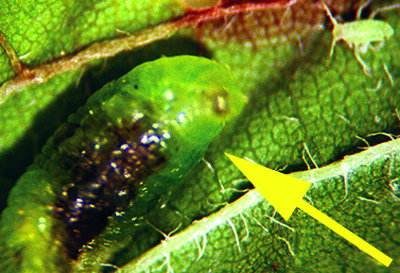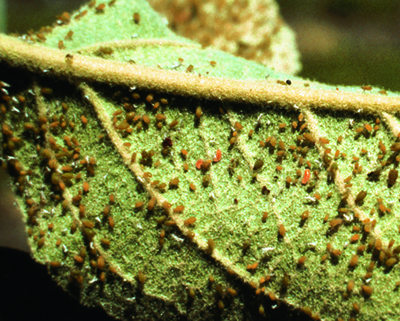Predators
July 31, 2015
Predatory flies
The most important families of predatory flies are Syrphids and Cecidomiids.
Syrphid fly adults feed on nectar. They are also called hover flies because they hover in the air. Adults are often mistaken for honey-bees; but have only one pair of wings, compared with two pair for honeybees. Larvae are green to brown, sometimes bi-colored. They are important aphid predators and are often found in aphid colonies. Larvae are 5-10 mm long.


Cecidomyiid larvae are small (2 to 3 mm long) legless, and bright orange in color. They feed on aphids and spider mites. They inject a paralyzing toxin into the aphid’s leg joints then suck out the aphid’s body contents through the thorax. When aphid populations are high, these predators may kill many more aphids (4 to 65 per day) than they can eat.

Bright orange cecidomiid larvae feeding on aphids. Only the larvae are predaceous. Adults are small, black delicate-looking midges.
Print a PDF of this page: Natural enemies – Predators



 Print
Print Email
Email



